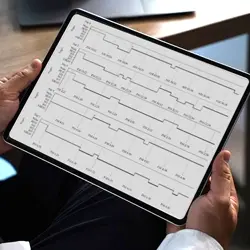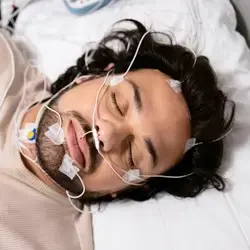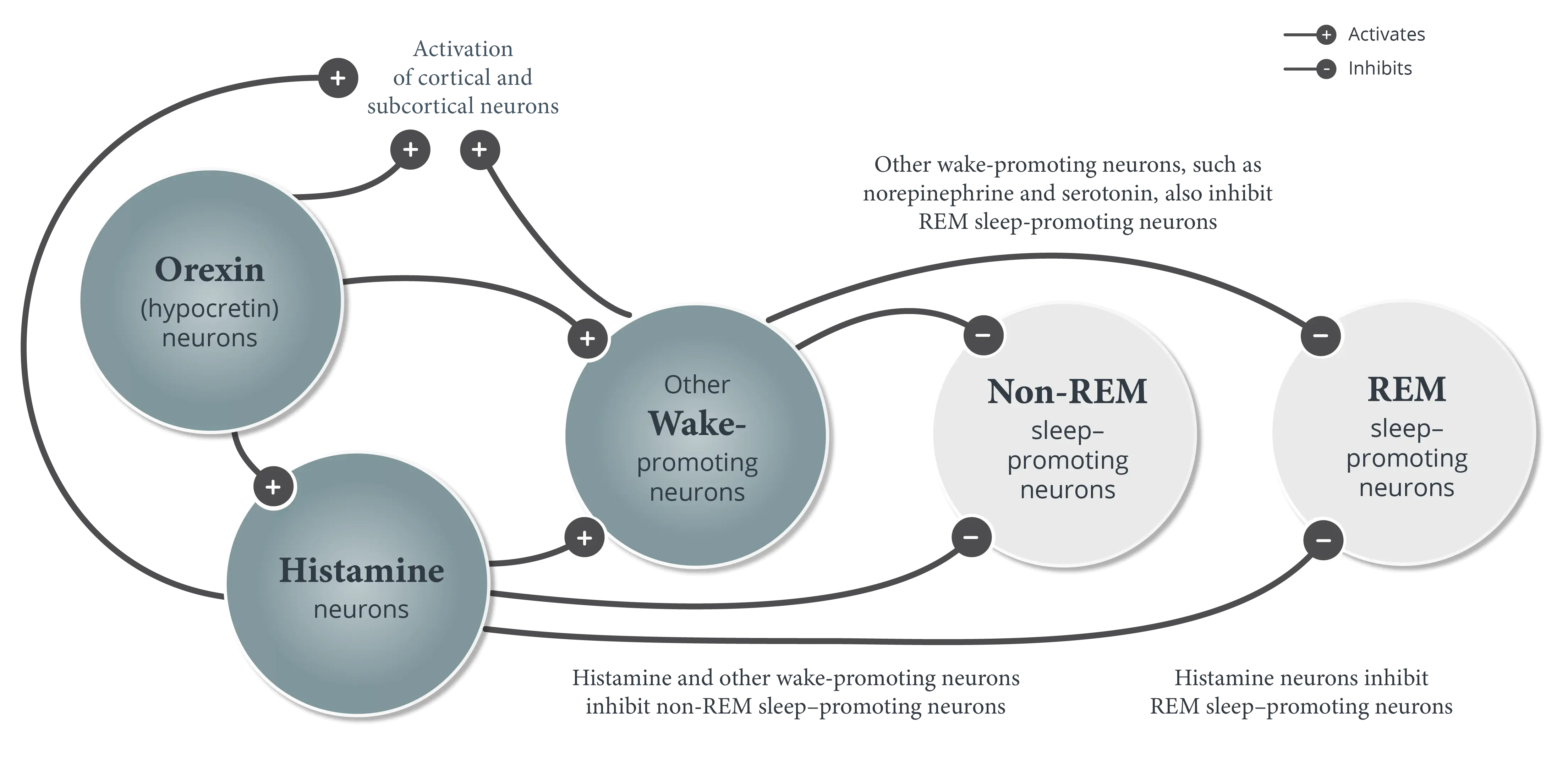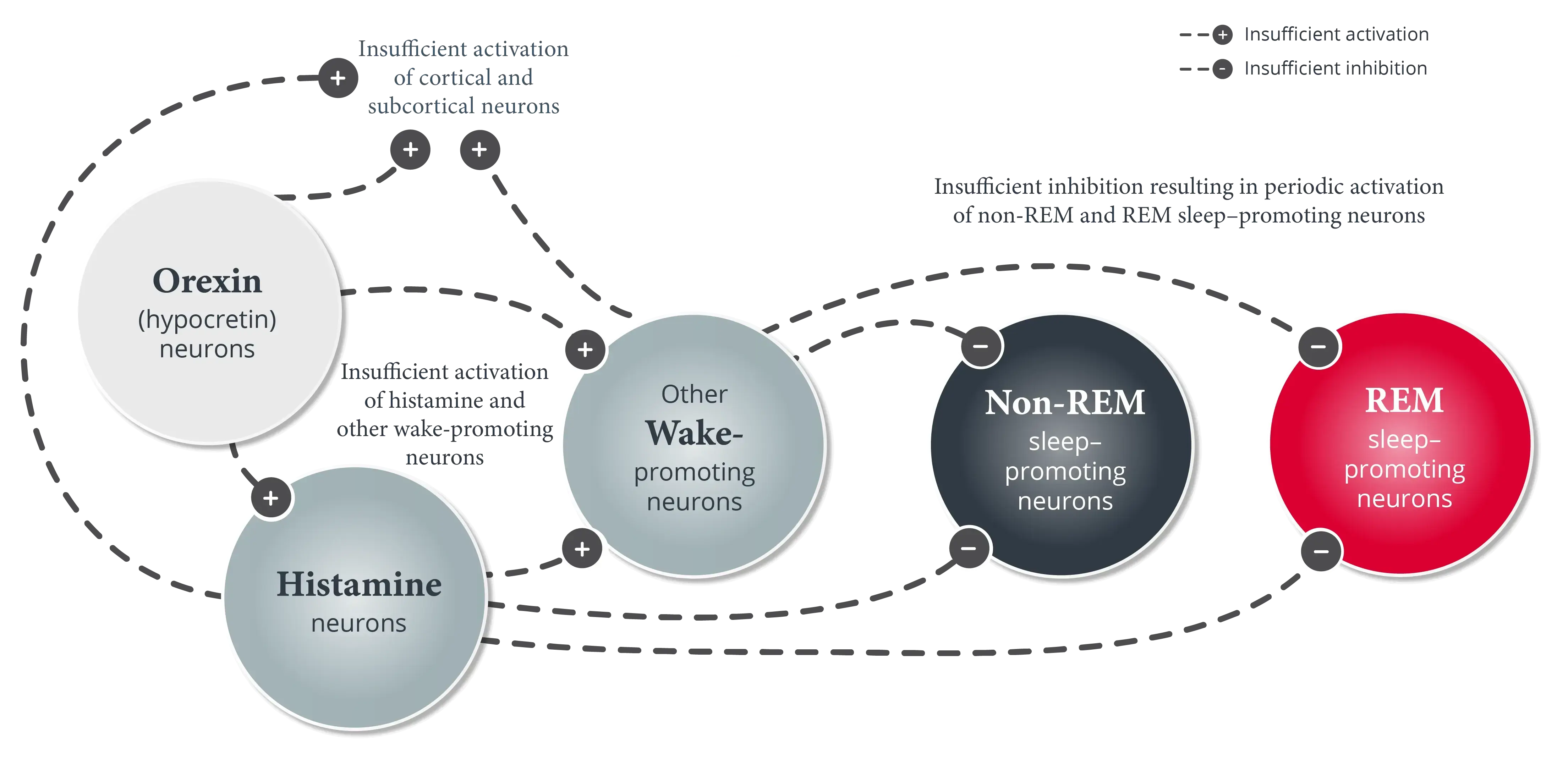

Evaluating Symptoms of Narcolepsy
This content was developed using the International Classification of Sleep Disorders, third edition, text revision (ICSD-3-TR) and other materials.
Evaluating Symptoms of Narcolepsy
This content was developed using the International Classification of Sleep Disorders, third edition, text revision (ICSD-3-TR) and other materials.
Overview
It is important to regularly assess patients’ narcolepsy symptoms to understand their impact and monitor any changes, including those associated with treatment.1,2
The American Academy of Sleep Medicine (AASM) recommends assessing excessive daytime sleepiness (EDS) with a validated scale at every patient visit and documenting any change from baseline.1,2 Regular assessment of cataplexy is also important, as it may develop and evolve over the course of the disorder.3-5
Daytime sleepiness severity can be subjectively quantified with one of many validated scales, such as the Epworth Sleepiness Scale (ESS), which measures adult patients’ perceived likelihood of falling asleep in 8 common daily situations, such as sitting and reading or sitting quietly after lunch.6,7 The maximum score on the ESS is 24, with higher scores reflecting a higher chance of falling asleep; ESS scores >10 indicate EDS, and scores ≥16 indicate severe EDS.6
The Functional Outcomes of Sleep Questionnaire, Short Form (FOSQ-10) is also a validated self-assessment of EDS in adult patients aged 20 to 60 years. It is a 10-item questionnaire that assesses the impact of EDS on daily activities across 5 domains (general productivity, activity level, vigilance, social outcomes, and intimacy and sexual relationships) and also assesses changes with treatment. On the FOSQ-10, lower scores indicate greater functional impairment (total scores range from 5-20).8,9
EDS can also be quantified objectively by a Multiple Sleep Latency Test (MSLT; performed in accordance with current recommended protocols), which measures the physiologic propensity of patients to fall asleep in quiet situations. Because there is not always correlation between subjective and objective measures, they must be interpreted in concert with appropriate clinical judgment.6
The Narcolepsy Severity Scale (NSS) is a validated, 15-item self-assessment that evaluates the frequency, severity, and impact of the 5 main narcolepsy symptoms—EDS, cataplexy, hypnagogic hallucinations, sleep paralysis, and disrupted nighttime sleep—in adult patients. Higher scores indicate more severe symptoms. The NSS is intended for monitoring symptom severity in patients with narcolepsy type 1, rather than as a diagnostic tool.10
The clinical interview is an important aspect of evaluating EDS, cataplexy, and any potential additional symptoms associated with narcolepsy.6,11 Following best practices for clinical interviews in patients with narcolepsy may be helpful in evaluating more subtle manifestations of symptoms, as well as the impact of symptoms on the patient.6
The scales described above are also included in Clinical Resources, along with additional tools and resources.
References
- Krahn LE, Hershner S, Loeding LD, et al. Quality measures for the care of patients with narcolepsy. J Clin Sleep Med. 2015;11(3):335.
- Morgenthaler TI, Aronsky AJ, Carden KA, Chervin RD, Thomas SM, Watson NF. Measurement of quality to improve care in sleep medicine. J Clin Sleep Med. 2015;11(3):279-291.
- Almeneessier AS, Alballa NS, Alsalman BH, Aleissi S, Olaish AH, BaHammam AS. A 10-year longitudinal observational study of cataplexy in a cohort of narcolepsy type 1 patients. Nat Sci Sleep. 2019;11:231-239.
- Huang B, Xu T, Wang Z, et al. The clinical characteristics of cataplectic attack in narcolepsy type 1. Sleep Med. 2021;77:261-269.
- Sturzenegger C, Bassetti CL. The clinical spectrum of narcolepsy with cataplexy: a reappraisal. J Sleep Res. 2004;13(4):395-406.
- American Academy of Sleep Medicine. International Classification of Sleep Disorders. 3rd ed, text revision. American Academy of Sleep Medicine; 2023.
- Johns M. About the ESS. The Epworth Sleepiness Scale. Accessed January 14, 2025. https://epworthsleepinessscale.com/about-the-ess/
- Chasens ER, Ratcliffe SJ, Weaver TE. Development of the FOSQ-10: a short version of the Functional Outcomes of Sleep Questionnaire. Sleep. 2009;32(7):915-919.
- Weaver TE, Laizner AM, Evans LK, et al. An instrument to measure functional status outcomes for disorders of excessive sleepiness. Sleep. 1997;20(10):835-843.
- Dauvilliers Y, Barateau L, Lopez R, et al. Narcolepsy Severity Scale: a reliable tool assessing symptom severity and consequences. Sleep. 2020;43(6):zsaa009. doi:10.1093/sleep/zsaa009
- Scammell TE. Clinical features and diagnosis of narcolepsy in adults. Clinical Decision Support | UpToDate | Wolters Kluwer. Updated December 16, 2024. Accessed January 3, 2025. https://www.uptodate.com/contents/clinical-features-and-diagnosis-of-narcolepsy-in-adults








